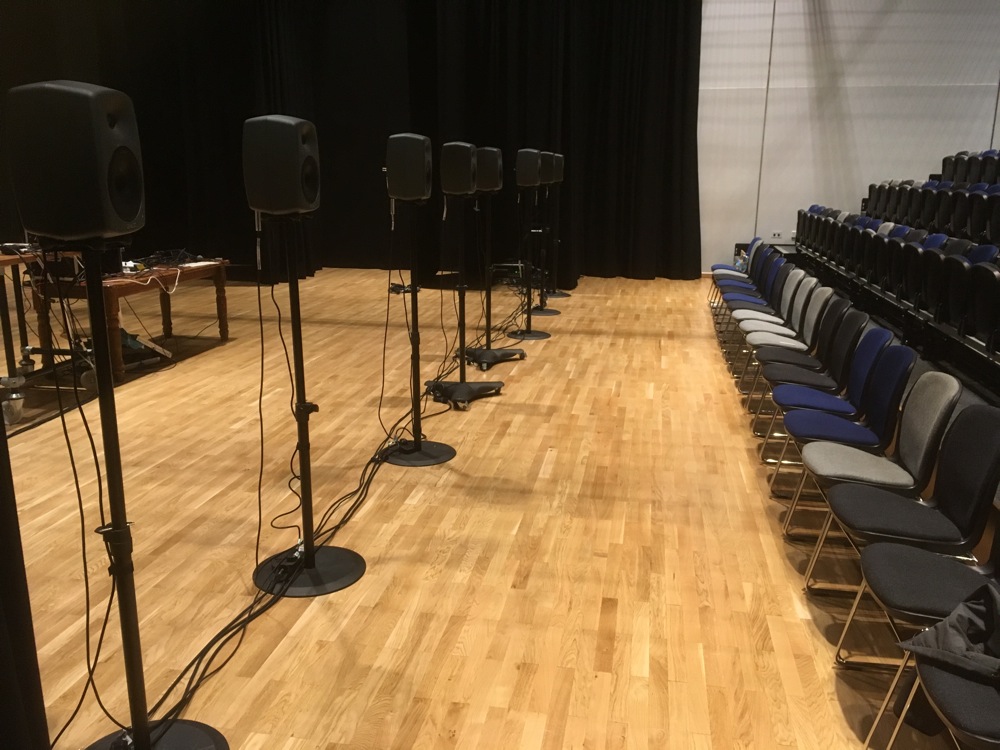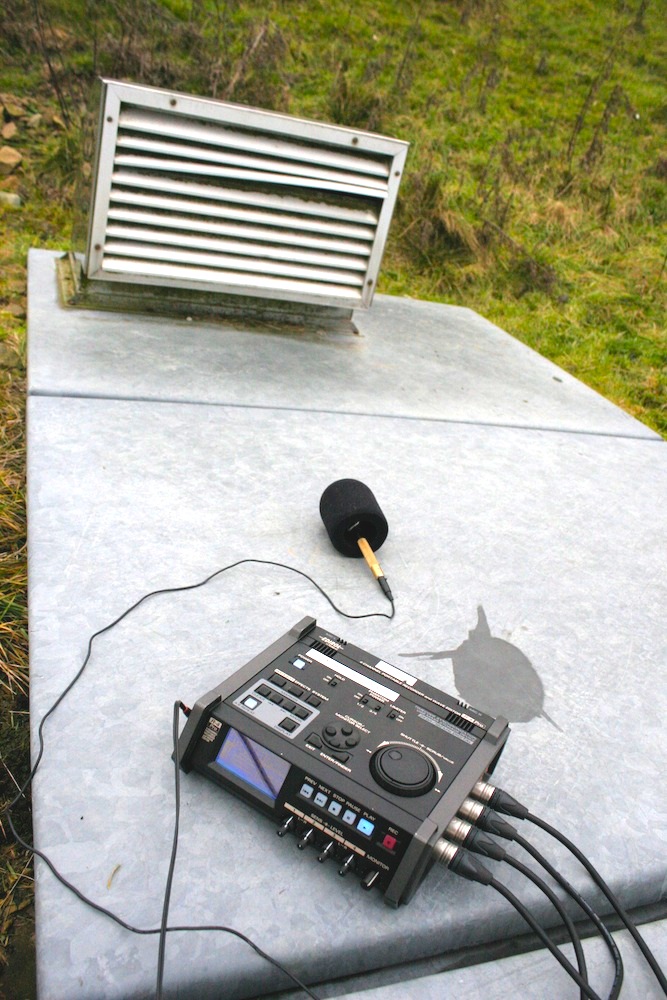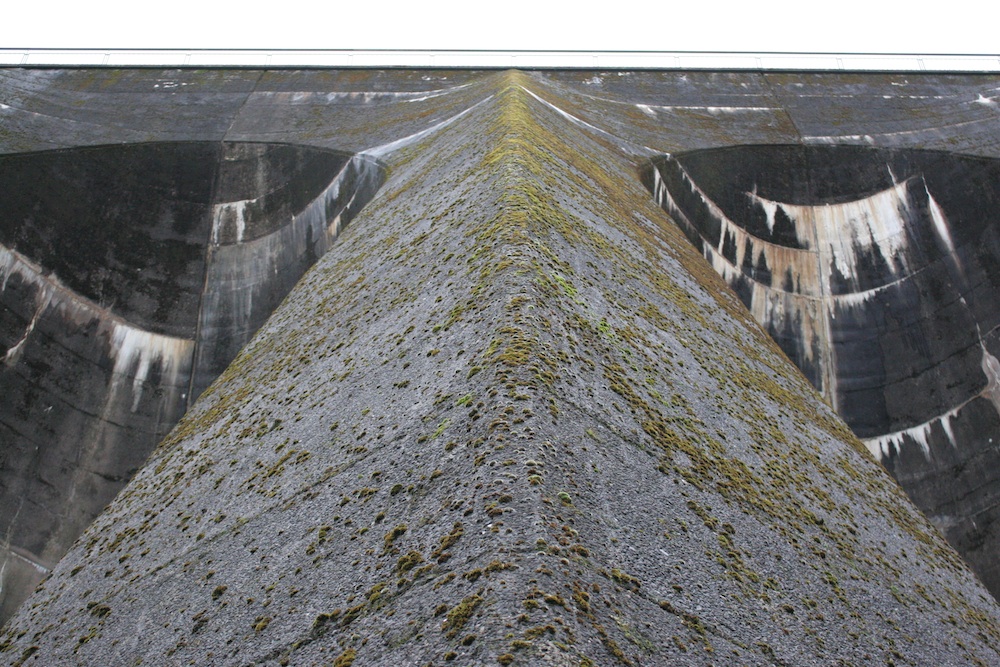Lamaload (2016)
Duration: 10’59
Format: 8 Channel Fixed Media
Lamaload is an acousmatic composition that addresses the acoustic ecology of a rural setting. The presence of the Lamaload dam in the Peak District National Park UK offers the listener a unique sonic experience. Its concave structure and geographical location captures, resonates and reflects the sounds of the surrounding area. This causes a divergence of the ecological infrastructure to reveal a constellation of audible narratives. The accidental discovery of the dam’s unique acoustic phenomena inspired the creation of the composition. The sound material consists of natural and found sounds recorded at different locations around the dam. A B-format ambisonic recording technique was applied in order to retain a sense of the soundfield. The ambisonic recordings were decoded at the EMS studio in Stockholm (SE) into eight discrete channels conveying a spatial experience that physically and metaphorically relates to the specific environment. Sound carries information about space, place and location; these parameters form a sound-image elucidating the relation between subject and object. When one of the parameters is displaced, we are acquainted with the experience of space. Lamaload continuously moves between many spatial transitions that occur in the sonic content eluding to an imaginary landscape. Lamaload was composed during a composer-in-residency program at the NOVARS research centre at the university of Manchester 2015/16.
What is Acoustic Ecology?
Acoustic Ecology investigates soundscapes as complex sounding systems that change in space and time, and shape our understanding of the surrounding world. Soundscapes present analytical challenges relating to perception, spatio-temporal dynamics, effects of anthropogenic sounds on ecosystems, changing acoustic environments, acoustic biodiversity and unwanted sounds. New possibilities for archiving soundscape recordings or manipulating them have emerged during the last few decades, which raised the potential for composing with associative material.
Tech. setup : Lamaload the layout for a ‘ring of eight’ loudspeakers..
Concerts:Sound and Environment 2017 – Art | Science | Listening | Collaboration, 29th June – 2nd July, 2017, University of Hull
Premiere MANTIS festival 2016 at the University of Manchester, UK.
Artist Interview
2019: March 23rd – Interview transcription with Dr. Mark Pilkington for Centre for Mobilities Research (ceMore) at Lancaster University.
————————————————————————————–
Lamaload A/V (2017)
Duration: 10’59
Format: 8 channel Audio-visual Installtion
Lamaload A/V is an audio-visual composition that addresses the ecology of a rural setting. The presence of the Lamaload dam in the Peak District National Park, UK offers an audio-visual experience. Its unique architectural form provides an acoustic screen that magnifies and reflects the sounds of the surrounding area. In Lamaload A/V (2017) photographic and graphic images of the dam and surrounding area are directly animated by natural and human-made sounds. Achieved by using a custom-built program that analyses the eight discrete audio channels of Lamaload (2016) visualized across eight corresponding screens. The result is a reconstruction of audio-visual spatial-imaginings founded upon concepts that critically engage with a public in meaningful ways. According to Ouzounian (2013 p. 74) such a critical spatial audio practice does not merely ‘happen in space’, but is poised radically to transform the very terms of its constitution. This notion can be equally applied to Lamaload A/V (2017) in terms of an audio-visual installation. The visuals were programmed using Processing. Composed at the Thought Universe electronic music studio, Manchester, 2017.
Video excerpt of lamaload a/v installation (2017)
Tech. Setup : Option 1 – Lamload A/V ‘ring of eight’ speaker and screen layout
Tech. Setup : Option 2 – Lamload A/V speaker and screen layout
Tech. Setup : Option 3 – Lamload A/V speaker and screen layout
Concerts and Screenings:
2023: March 4th MANTIS festival.
About Drought Conference, Thursday, 07.11.2019 , The Royal Society, 6-9 Carlton House Terrace, London SW1Y 5AG, UK.
UPIC – Graphic Interfaces for Notation Conference Fri, 28.09.2018 – Sat, 29.09.2018, ZKM | Karlshrule, Lorenzstraße 19, 76135 Karlsruhe, Germany.
Liquidscapes Conference – June 20-22 2018 at Dartington Hall, Totnes, Devon, UK.
Balance/Un-Balance – A Sense of Place, August 21 – 23 2017, i-Dat, Plymouth University, UK.
Pre-concert images at Plymouth University, UK.
Lamaload (text version) 2018
Water is life. Water is the blood of the natural environment. Rivers are veins in the landscape that let water flow, let water become the sea and oceans, its lifecycle, its heartbeat. Indeed, water is alive. It has a pulse, it teams with beings for which water is the whole universe. But water is also a resource, perpetually renewed yet always limited. More so for humans, who need to drink, who need to irrigate crops, who need to generate electricity, who need to wash away waste. Society needs the right amount of water of the right quality in the right place at the right time. It’s a question of survival. And so, from our earliest human civilisations, we have attempted to tame water, to control it, to make it ours. A testament to these endeavors are the dams that hold on to water, that capture it for a short time. From kids putting stones across a stream to the vast monoliths that stretch across our largest rivers, dams change nature, interrupt its pulse. For some life it is an impenetrable barrier. Upstream, rivers become lakes, the life blood is shaped into a new state, life changes. Downstream, rivers become shallower, the veins become smaller, life changes too.
But what if we could hear this pulse? Lamaload is an acousmatic composition that addresses the acoustic ecology of a dam in the Peak District National Park, UK. Its complex soundscape offers the listener the unique, immersive, experience of what a dam perceives.
Text written by Dr. Francois Edwards from the Centre for Ecology and Hydrology.
Historical Context of Lamaload
The concept of Lamaload resonates with ecological concerns expressed by the futureDams consortium, an interdisciplinary research consortium working to improve planning and governance of integrated water-energy-food-environment systems. The conference brought together scientists, engineers and ecologists to discuss the global impact of dam building. It was at the conference I met the ecologist Dr. François Edwards, we have since worked together on an installation at the Royal Society in London (2019) and he kindly supplied the data for bugData (2020)
——————————————————————————————————————————————————
Images on-site at Lamaload Dam, Macclesfield, Cheshire, UK.
Bibliography
Gooley, T. How to Read Water: Clues & Patterns from Puddles to the Sea. Spectre, 2016.
Ouzounian, G. Sound Installation Art: From Spatial Poetics to Politics in Georgina Born (ed.), Music, Sound and Space: Transformations of Public and Private Experience. Cambridge: Cambridge University Press: 73-89, 2013.
Pilkington, M and Edwards, F. Lamaload, Liquidscapes edited by Richard Povall. Artdotearth, Dartington Hall, Devon UK (2019) 255 – 261













